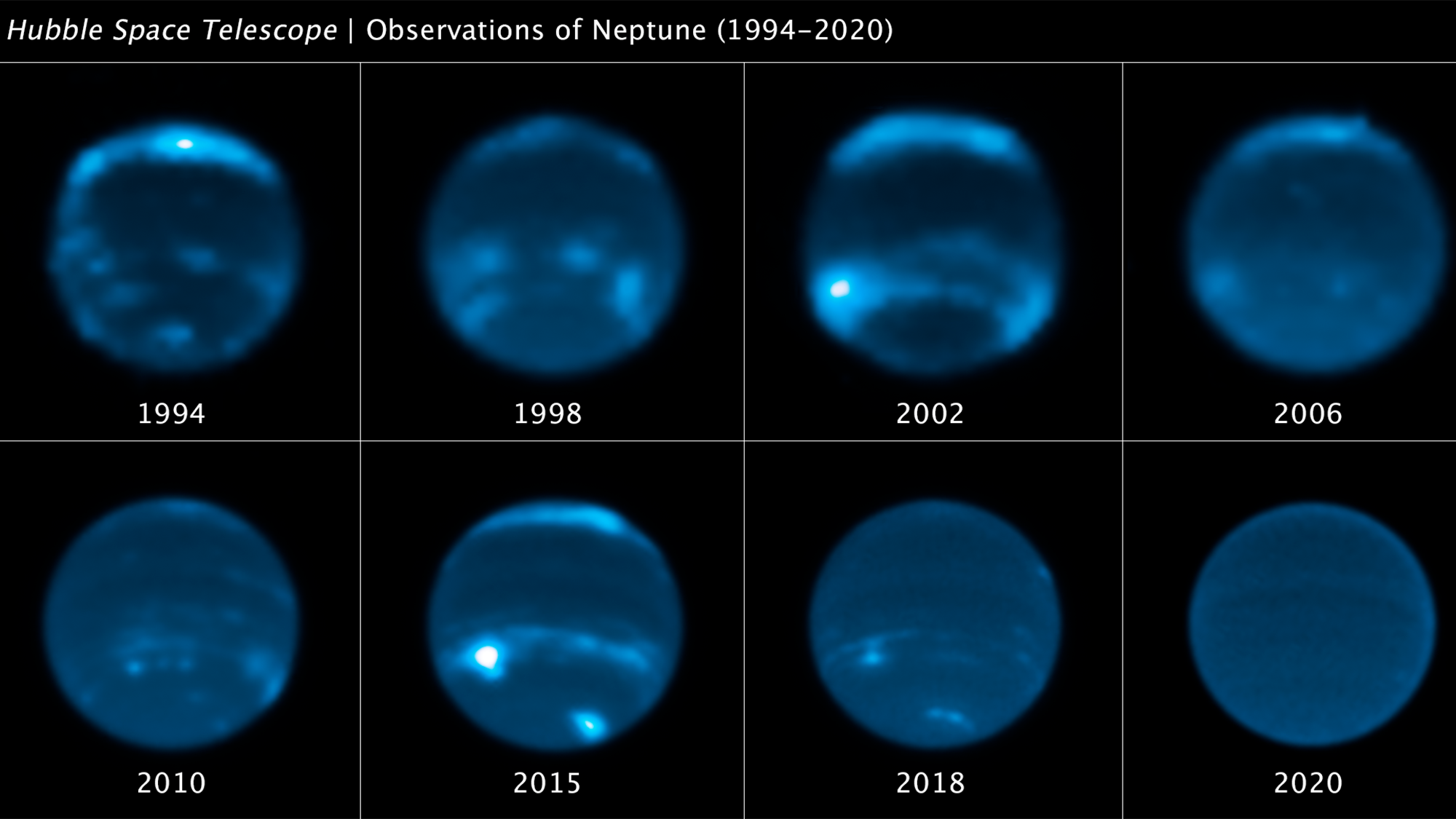

With its vanishing clouds and now a large dark spot, the planet Neptune appears to be going through some things. Here’s a bit about why the eighth planet in our solar system is causing all this drama.
[Related: Neptune’s faint rings glimmer in new James Webb Space Telescope image.]
Is Neptune the new Jupiter?
Astronomers using the European Southern Observatory’s Very Large Telescope (VLT) have observed a large dark spot and a smaller bright spot next to it in Neptune’s atmosphere. This is the first time that the planet’s dark spots have ever been observed using an Earth-based telescope The findings were published on August 24 in the journal Nature Astronomy. These new spots are only occasional features in the blue background of Neptune’s atmosphere and the new results are providing clues to their mysterious nature and origin. Spots are common in the atmospheres of giant planets, with Jupiter’s Great Red Spot being the most famous. In 1989, a dark spot was first discovered on Neptune by NASA’s Voyager 2 before the spots disappeared just a few years later.
The international team of researchers used the VLT to rule out the possibility that the dark spots are caused by a ‘clearing’ in the planet’s clouds. The team’s new observations indicate that the dark spots are likely due to air particles darkening in the layer below the main visible haze layer, as these hazes and ices mix in Neptune’s atmosphere.
The team used the VLT’s Multi Unit Spectroscopic Explorer (MUSE) to split the reflected sunlight from Neptune and its spot into component colors, or wavelengths, so that they could study the spot in more detail than was possible before.
The observations also offered up a surprise result.
“In the process we discovered a rare deep bright cloud type that had never been identified before, even from space,” study co-author and University of California, Berkeley planetary scientist Michael Wong, said in a statement.
These unusual luminous clouds appeared as a bright spot along the larger main dark spot, showing that the new “deep bright cloud” was actually at the same level in the atmosphere as the main dark spot. The team says this is a completely new type of feature compared to the smaller ‘companion’ clouds of high-altitude methane ice that astronomers have previously observed.
The case of the disappearing clouds

About four years ago, Neptune’s ghostly, cirrus-like clouds largely disappeared, and only a patch of clouds hovering over the ice giant’s south pole exists today. Using almost 30 years worth of observations captured by three different space telescopes, scientists have finally determined that the diminished cloud cover could be in sync with the solar cycle. The findings were recently published in the journal Icarus.
[Related: Neptune’s bumpy childhood could reveal our solar system’s missing planets.]
“These remarkable data give us the strongest evidence yet that Neptune’s cloud cover correlates with the Sun’s cycle,” study co-author and University of California, Berkeley astronomer Imke de Pater said in a statement. “Our findings support the theory that the sun’s (ultraviolet) rays, when strong enough, may be triggering a photochemical reaction that produces Neptune’s clouds.”
The level of activity in the sun’s dynamic magnetic field will increase and decrease during the solar cycle. According to NASA, every 11 years, the magnetic field flips, as it becomes more tangled like a bundle of string. During periods of more heightened activity on the sun, more intense ultraviolet radiation bombards our solar system.
The team used data from the Lick Observatory in California, the W.M. Keck Observatory in Hawaii, and NASA’s 30-year-old Hubble Space Telescope and observed 2.5 cycles of cloud activity over the 29-year period of Neptune observations. The planet’s reflectivity increased in 2002 and dimmed in 2007. Then, the ice giant brightened again in 2015 before it darkened to its lowest level ever seen in 2020. That’s when most of the cloud cover faded away.
“It’s fascinating to be able to use telescopes on Earth to study the climate of a world more than 2.5 billion miles away from us,” study co-author and Keck Observatory staff astronomer Carlos Alvarez said in a statement. “Advances in technology and observations have enabled us to constrain Neptune’s atmospheric models, which are key to understanding the correlation between the ice giant’s climate and the solar cycle.”
